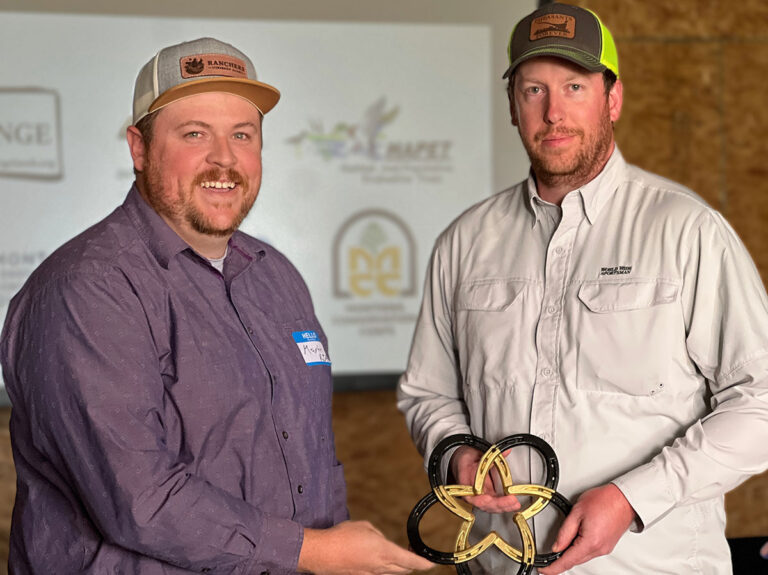conservation
LAND STEWARDSHIP TODAY
FOR A Better TOMORROW.
Working together Through Land Stewardship
Community Based Conservation Efforts
With pressures from outside interests and barriers in ranch transitioning, the Northern Great Plains has become one of the most at-risk habitats in the world. The Ranchers Stewardship Alliance aims to build rural resilience by using community–based conservation techniques that ensure the ranching industry remains viable for generations to come. Through conservation efforts like rehabilitating cropland to grassland, building wildlife-friendly fences, and improving water infrastructure, Ranchers Stewardship Alliance (RSA) works to promote and assist in implementing sustainable management practices that benefit ranches, livestock, wildlife, and the environment.
Enhancing Wildlife Habitat
By Species
Big Game
For wildlife that depend on healthy grassland and sage-steppe ecosystems, the prairie of north-central Montana is among the best places left in North America. Big game like mule deer, white-tailed deer and elk are numerous on the rolling plains. Bighorn sheep thrive in the steeper terrain of the Missouri River Breaks and the Little Rocky Mountains. This region is the stage for one of America’s longest land migrations: pronghorn antelope travel hundreds of miles between their summer range as far north as Saskatchewan and their wintering areas in central Montana. In an increasingly crowded world, there are few places remaining where a journey like this could still be supported by intact, natural landscapes.
Migratory Birds
The Northern Great Plains Prairie Grassland is home to many migratory bird species. Our region is home to the largest sage-grouse population in Montana, which acts as a stronghold for the species, as their population has been in sharp decline throughout the West. This land also hosts Sharp-tailed Grouse, songbirds, shorebirds, waterfowl, Long-billed Curlews, Upland Sandpipers, longspurs, sparrows, Sprague’s Pipit, and many others. Grassland-associated species like these have been experiencing some of the steepest population declines of any birds in North America. One example is Thick-billed Longspur, which has lost about 92% of its population since 1966. Ranch land in northeast Montana provides crucial habitat for remaining populations of this species and many others like it.
Livestock
The grasslands of the Northern Great Plains produce a large percentage of the nation’s cattle herd. Supporting livestock grazing requires supporting grasslands. Ranchers Stewardship Alliance (RSA) works to increase the grazing capacity of the grasslands through infrastructure projects meant to help conserve habitat through benefiting livestock operations.
People
We believe it’s no coincidence that wildlife populations continue to thrive where ranching communities have held onto their way of life. Indeed, many of the most vulnerable prairie species depend on ranch lands for their survival. The Rancher’s Stewardship Alliance (RSA) is working closely with local and national nonprofit groups, state and federal agencies to maintain and enhance habitat for wildlife in the working landscape. Our project efforts, and the support of our partners, support many local contractors, vendors, and businesses.
Enhancing Wildlife Habitat
by landscape
Soil Health
Healthy grasslands start with healthy soils. Soils are the ultimate source of habitat, forage and economic viability in our area. Intact soils of the native range are some of the largest terrestrial carbon sinks known and their conservation has worldwide Implications. A focus on soil health is a focus on the health of wildlife, livestock, our community, and our environment.
Healthy Water Systems
Water Is the limiting factor of production in our landscape. Water controls grassland production, the ability to graze animals, and the quality of wildlife habitat. Acres that lack sufficient stock water are more likely to be converted from native range to cropland. Areas of wet meadows create “mesic” habitat for wildlife and increased production for livestock. Ranchers Stewardship Alliance’s work in stock water and mesic restoration improves water systems.
Grasslands
Through their intact expanses, grasslands provide some of the largest and most stable wildlife habitats, grazing lands, carbon sinks, watersheds, aquifers, and agricultural economies in the world. Their conservation is key to global health and vitality. Grasslands are also one of the most threatened ecosystems in the world. Invasive plants, land conversion to subdivisions and cropland, wet meadow habitat reduction, and traditional and renewable energy development are all pressing for space in these native prairies. Risk for loss Is only increasing.
Conservation collaborations
Healthier Landscapes, animals, & people
-
Gold Star Recipient
The Ranchers Stewardship Alliance (RSA) is proud to announce Shaun McCabe, farm bill biologist for Pheasants Forever in Chinook, MT, as the recipient of the 2025 Gold Star Award. This annual recognition honors individuals who demonstrate exceptional commitment to collaborative conservation and make a lasting impact on working lands and wildlife across our region.
